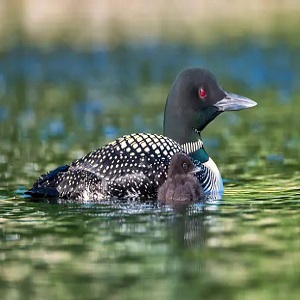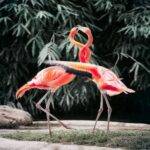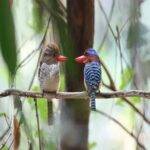Introduction Of The State Bird Of Minnesota
The state bird of Minnesota is the common loon (Gavia immer). It is a large, black and white waterbird with a long neck and a distinctive wailing call. Loons are found in lakes and rivers throughout the state, and are especially common in the north.
Loons are excellent swimmers and divers, and they feed primarily on fish. They are also known for their elaborate courtship displays, which involve singing, dancing, and diving. Loons are monogamous birds, and they mate for life.
The common loon was designated as the state bird of Minnesota in 1961. It was chosen because it is a symbol of the state’s natural beauty and wilderness. Loons are also popular tourist attractions, and their haunting calls are a familiar sound to many Minnesotans.
Here are some fun facts about the common loon:
- Loons can dive to depths of up to 90 feet in search of food.
- Loons can fly up to 60 miles per hour.
- Loons are solitary birds, and they only come together to mate and raise their young.
- Loons are migratory birds, and they spend the winter in coastal areas from California to Mexico.
- Loons are listed as a vulnerable species in Minnesota.
- Loons are an important part of the Minnesota ecosystem, and they are also a beloved symbol of the state. We can all help to protect loons by keeping our lakes and rivers clean and healthy.
Why is the common loon the state bird for Minnesota?
The common loon is the state bird of Minnesota because it is a familiar and iconic symbol of the state’s natural beauty and heritage. Loons are large, black-and-white birds with distinctive red eyes and haunting calls that echo across Minnesota’s lakes and forests. They are also excellent swimmers and divers, and they play an important role in the state’s ecosystem.

Here are some of the reasons why the common loon is the state bird of Minnesota:
- Loons are iconic symbols of Minnesota’s natural beauty. Loons are often depicted in Minnesota art and literature, and they are a popular subject of photography.
- Loons are important members of Minnesota’s ecosystem. Loons help to control populations of fish and other aquatic life.
- Loons are beloved by Minnesotans. Loons are a popular attraction for tourists and residents alike. Many Minnesotans enjoy listening to their calls and watching them swim and dive.
In 1961, the Minnesota legislature designated the common loon as the state bird. The loon was chosen over other candidates, such as the goldfinch and the pileated woodpecker, because of its iconic status and its importance to the state’s natural heritage.
The common loon is a fitting symbol for the state of Minnesota. It is a beautiful, powerful, and important bird that embodies the state’s natural beauty and wild spirit.
When did the common loon become the state bird for Minnesota?
The common loon became the state bird of Minnesota on March 13, 1961. It was officially signed into law as our state bird by Gov. Elmer Lee Anderson.
Minnesota is the only state in the United States to have the common loon as its state bird. The loon is a fitting symbol for Minnesota, known as the “Land of 10,000 Lakes.” Loons are large, aquatic birds that are common on Minnesota’s lakes and rivers. They known for their distinctive calls and their excellent swimming and diving abilities.
The common loon is a popular bird among Minnesotans and visitors alike. It is a symbol of the state’s natural beauty and its commitment to conservation.
What does the state bird of Minnesota look like?

The state bird of Minnesota is the common loon, also known as the great northern diver. It is a large black and white aquatic bird with a long, slender neck and a sharp bill. Loons have red eyes and wingspans of up to five feet. They are excellent swimmers and divers, and they can often be seen swimming in lakes and rivers across the state.
In the summer, loons have a distinctive black and white plumage. Their heads and necks are black, with a white patch on the throat. Their backs and wings are checkered black and white, and their underparts are white. In the winter, loons have a more subdued plumage, with mostly gray upperparts and white underparts.
Loons are known for their haunting calls, which can often be heard echoing across lakes and rivers. Their calls are used to communicate with each other, and they can be heard for miles.
Loons are an important part of Minnesota’s ecosystem. They help to control fish populations and they are a food source for other animals, such as eagles and bears. Loons are also a popular tourist attraction, and visitors from all over the world come to Minnesota to see and hear these amazing birds.
Identification Of The State Bird Of Minnesota:
Adult common loons in breeding plumage have black heads, necks, and backs with white spots and checks. Their breasts and bellies are white. Their bills are black and their eyes are red.
Adult common loons in winter plumage are plain gray on the back and head with a white throat. Their bills also fade to gray.
Juvenile common loons look similar to adults in winter plumage, but they have more pronounced scalloping on the back.
Common loons are found in lakes and rivers across North America. They are most common in the northern regions, but they can also be found in the southern United States in the winter.
What Does Birds Of Prey Mean? Most Important Facts, Definition, Characteristics & Examples [2023]
Here are some tips for identifying common loons:
- Look for a large, diving waterbird with a rounded head and dagger-like bill.
- Note the bird’s long body and short tail.
- In flight, look for a bird with a shallow wingbeat and an unwavering flight path.
- Pay attention to the bird’s color pattern. In breeding plumage, adult common loons have black heads, necks, and backs with white spots and checks. In winter plumage, they are plain gray on the back and head with a white throat. Juvenile common loons look similar to adults in winter plumage, but they have more pronounced scalloping on the back.
If you are unsure whether or not you have identified a common loon, it is always best to consult a field guide or an expert.
Here are some additional tips for finding common loons:
- Look for loons on lakes and rivers, especially in remote and undisturbed areas.
- Loons are most active in the early morning and late evening hours.
- Listen for the loons’ distinctive calls. They known for their haunting yodeling sound.
Molt:
“Molt” in American English, refers to the process by which animals, particularly birds, shed their old feathers, hair, or skin and grow new ones. This shedding and replacement of feathers or other coverings is crucial for the health and survival of many species. Molting serves several purposes:
- Feather Maintenance: It helps birds maintain the health and functionality of their feathers. Over time, feathers can become damaged, worn, or faded. Molting allows birds to replace these old feathers with new ones, ensuring efficient flight, insulation, and waterproofing.
- Growth: Molting is essential for the growth of young birds. Juvenile birds go through several molts as they develop, gradually acquiring their adult plumage.
- Seasonal Adaptation: Some birds undergo a complete molt, replacing all of their feathers, as they transition between seasons. For example, many migratory birds molt into a more camouflaged plumage before their long-distance journeys.
- Regeneration: Molting can help birds regenerate feathers lost due to injury or damage. This process allows them to recover and maintain their ability to fly and thermoregulate.
- Coloration Changes: In some species, molting can lead to changes in coloration, especially during breeding seasons. This can help attract mates or establish dominance.
Molting is a carefully orchestrated process controlled by hormones and often follows a specific pattern. Different bird species may have unique molt patterns, and the timing of molting can vary depending on factors such as age, sex, and environmental conditions. It’s an essential part of a bird’s life cycle that ensures their feathers remain functional and adapted to their needs.
Genomics:
Here are some key points about genomics:

- Genome: The genome of an organism contains all the genetic information required for the growth, development, and functioning of that organism. It consists of genes, which are specific sequences of DNA that code for proteins, as well as non-coding regions that play regulatory and structural roles.
- Sequencing: Genomics often involves the sequencing of an organism’s entire genome or specific regions of interest. DNA sequencing technologies have advanced significantly, making it possible to rapidly and accurately determine the sequence of nucleotide bases in DNA.
- Functional Genomics: This subfield focuses on understanding how genes function and interact with each other within an organism. It includes studies on gene expression, regulation, and the roles of specific genes in various biological processes.
- Comparative Genomics: Comparative genomics involves comparing the genomes of different species to identify similarities and differences. This can provide insights into evolutionary relationships, adaptations, and the genetic basis of specific traits.
- Genomic Medicine: Genomics has applications in medicine, including personalized medicine. By analyzing an individual’s genome, healthcare professionals can tailor treatments and preventive measures to a person’s genetic makeup, leading to more precise and effective healthcare.
- Genetic Research: Genomics plays a crucial role in research related to genetics, inheritance, and the causes of genetic diseases. It has contributed to the identification of genes associated with various diseases and conditions.
- Biotechnology and Agriculture: Genomics has applications in biotechnology and agriculture, such as the development of genetically modified organisms (GMOs), crop improvement, and livestock breeding.
- Ethical and Social Implications: The use of genomics raises ethical and social considerations, including issues related to genetic privacy, data security, and the potential for discrimination based on genetic information.
Distribution and Habitat Of Bird Of Minnesota:
“Distribution and Habitat” is a term commonly used in ecology and biology to describe the geographic range and the type of environment or habitat where a particular species of organism can be found.
1. Distribution: The distribution of a species refers to the geographic area or range where that species can be found. This can include regions, countries, continents, or even specific ecosystems. Distribution describes often in terms of both its global range and its local or regional ranges.
- Global Distribution: This refers to the entire range of a species, encompassing all the places in the world.
- Local or Regional Distribution: This focuses on the specific areas or habitats within the global range where the species is present. For example, a species might have a global distribution in North America but be restricted to certain states or ecosystems within that continent.
2. Habitat: Habitat refers to the specific type of environment or ecological niche in which a species lives, grows, and reproduces. It includes the physical and biological features of an area that provide the necessary resources for the species’ survival. Habitats can vary widely and include:
- Terrestrial Habitats: These are land-based habitats, such as forests, grasslands, deserts, and wetlands.
- Aquatic Habitats: These are water-based habitats, including freshwater environments like rivers, lakes, and ponds, as well as marine environments like oceans, coral reefs, and estuaries.
- Specialized Habitats: Some species are adapted to very specific or unique habitats, such as caves, hot springs, or hydrothermal vents on the ocean floor.
Hover Birds : An Important Guide To Unique Avian Flight [2023]
Behavior Of Bird Of Minnesota:
The common loon (Gavia immer) known for its distinctive behaviors. It is an excellent swimmer and diver but relatively awkward on land. These waterbirds are often seen on freshwater lakes in North America during the breeding season.
Common loons have a haunting, eerie call that serves as a means of communication and territory defense. They known for their elaborate courtship displays, including synchronized swimming and mutual preening.
Loons are carnivorous, primarily feeding on fish and aquatic invertebrates, which they catch by diving underwater. They are solitary birds and migrate to coastal waters during the winter.
Feeding Of Bird Of Minnesota:

Common loons (Gavia immer) are aquatic birds primarily known for their distinctive calls and striking black-and-white plumage. These birds are carnivorous and have a diet primarily composed of aquatic prey.
Loons are skilled divers and can plunge underwater to great depths in pursuit of food. Their diet typically includes fish, such as perch, sunfish, and minnows, which they catch by using their sharp, pointed bills.
Loons are also opportunistic feeders and may consume crustaceans, aquatic insects, and occasionally amphibians. They forage by swimming and diving in lakes, rivers, and coastal waters, making them well-adapted to their aquatic habitats. Their diet reflects their dependence on healthy freshwater ecosystems.
Breeding:
Common loons (Gavia immer) are known for their intricate breeding rituals and behaviors. These birds form monogamous pairs and engage in elaborate courtship displays, including synchronized swimming and calls. Loons build their nests near the water’s edge, often on small islands or remote shorelines.
Their nests look like shallow depressions lined with vegetation or pebbles. A female typically lays one to two eggs, which both parents take turns incubating for about four weeks. After hatching, loon chicks are precocial and rely on their parents for protection and food.
Families spend several weeks together on the water before young loons become independent and eventually migrate south for the winter. The breeding and chick-rearing period is a critical time for the loon population’s success, and their dependence on pristine freshwater habitats makes habitat conservation crucial for their survival.
Habitat Selection:
Common loons (Gavia immer) are highly selective in choosing their habitats for breeding and nesting. They prefer freshwater lakes, ponds, and occasionally large, slow-moving rivers in northern regions of North America. Loons are particularly drawn to clear, deep lakes with abundant fish populations, as fish make up a significant portion of their diet.
Their nesting sites are typically located on remote, undisturbed shorelines or islands, offering protection from predators. Vegetation near the water provides some concealment for their nests. This habitat selection ensures their safety during the vulnerable breeding season, as well as access to the aquatic resources they depend on for food and survival.
Vocalizations:
Common loons (Gavia immer) are famous for their haunting and distinctive vocalizations. They have a variety of calls used for communication. The most iconic is the eerie, tremolo call, often associated with their presence on northern lakes. This call can signal alarm, territorial disputes, or reunite loon pairs.
Another common call is the yodel, mostly heard during territorial confrontations between males. Loons also produce wails and hoots for contact calls. Each call carries unique information, contributing to their complex social interactions and behaviors, and these vocalizations are a vital part of their identity in their aquatic habitats.
FAQs:
What is the state bird of Minnesota?
The state bird of Minnesota is the Common Loon.
Why is the Common Loon the state bird of Minnesota?
The Common Loon was designated as Minnesota’s state bird in 1961 due to its significant presence in the state and its association with its numerous lakes and wilderness areas.
What are some interesting facts about the Common Loon?
The title suggests there are 10 amazing facts about the Common Loon.
Are there any conservation efforts in place to protect the Common Loon in Minnesota?
Yes, various conservation programs and initiatives are in place in Minnesota to protect the Common Loon and its habitat.
How can I learn more about the Common Loon and its role in Minnesota’s ecosystem?
You can learn more about the Common Loon by reading the article or exploring additional resources related to Minnesota’s state bird and its significance in the state’s ecology. Do you have any specific recommendations for further reading or sources of information?


